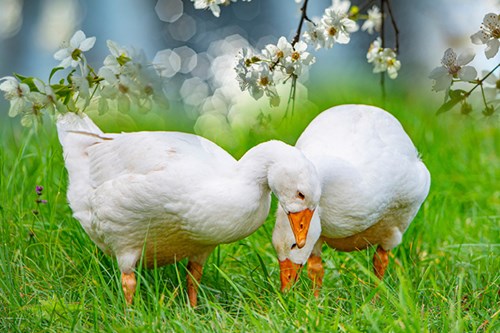Gizzard Worm (Amidostomum anseris) In Geese and Ducks

Gizzard Worm (Amidostomum anseris), a member of the Trichostrongyloid family, can infect geese and ducks, as well as ornamental and wild populations of many waterfowl. But geese are far more likely to suffer from its effects and die. They are thin bright red worms 1.5-2 cm in length with worms and larvae found beneath the lining of the gizzard. With a 14-22 day lifecycle it is the most important nematode to be concerned about in geese, also causing severe disease in goslings.

Symptoms
Worms and larvae are found beneath the lining of the gizzard, the second part of a bird's stomach which has a thick muscular wall for grinding food. Infection prevents the bird from digesting its food in so they slowly lose weight and starve to death. Symptoms include anorexia, anaemia, emaciation and death.
Detection & Treatment
Consider treating goslings proactively at 12 weeks old. After this time use worm egg counts every 12 weeks. The recommended treatment is Flubenvet.
Prevention
Birds are unlikely to suffer from gizzard worm if treated when new to the premises and then fed well, or grazed at a low stocking density. It helps to rotate and rest grazing to keep pasture as clean as possible.